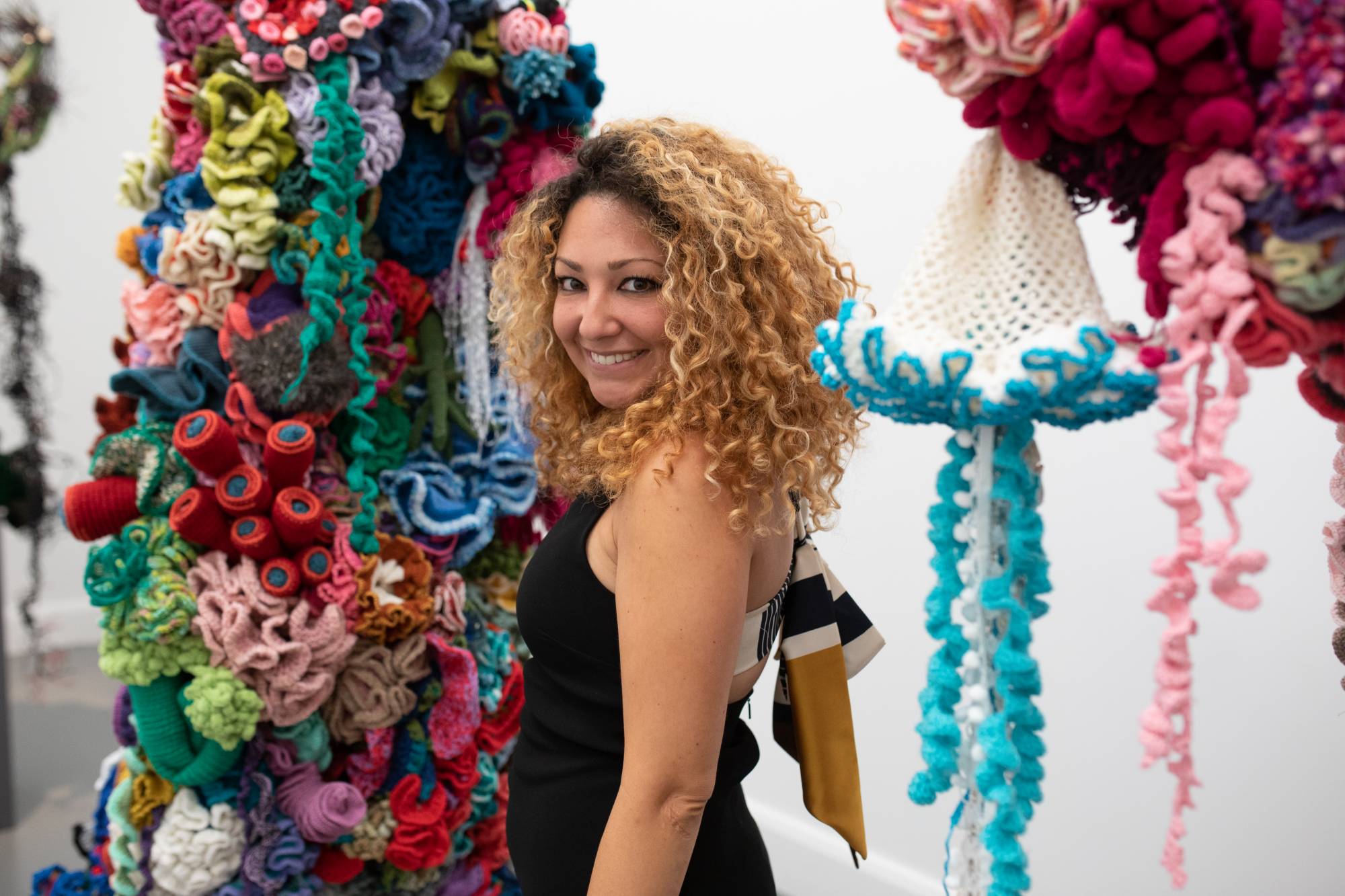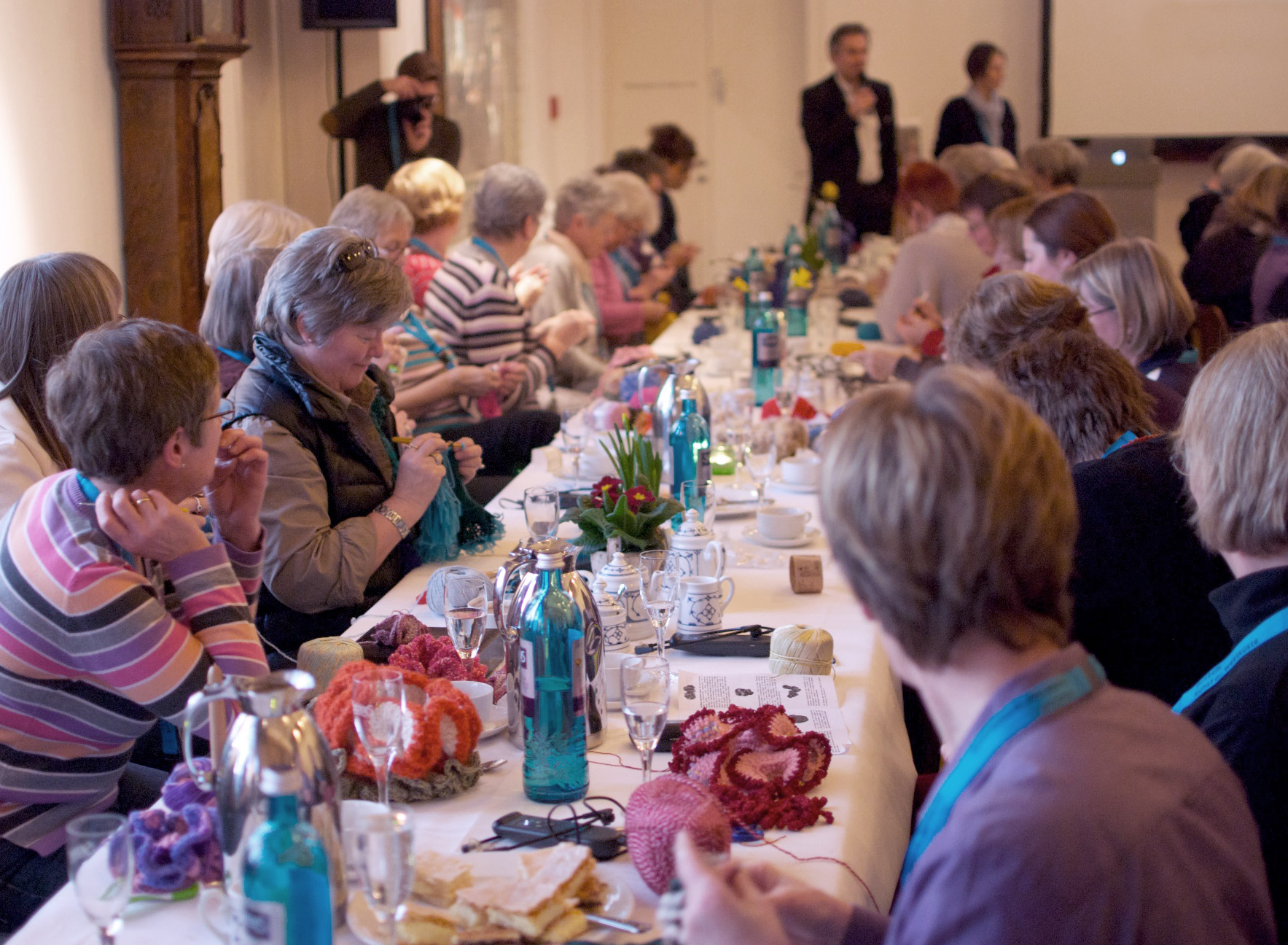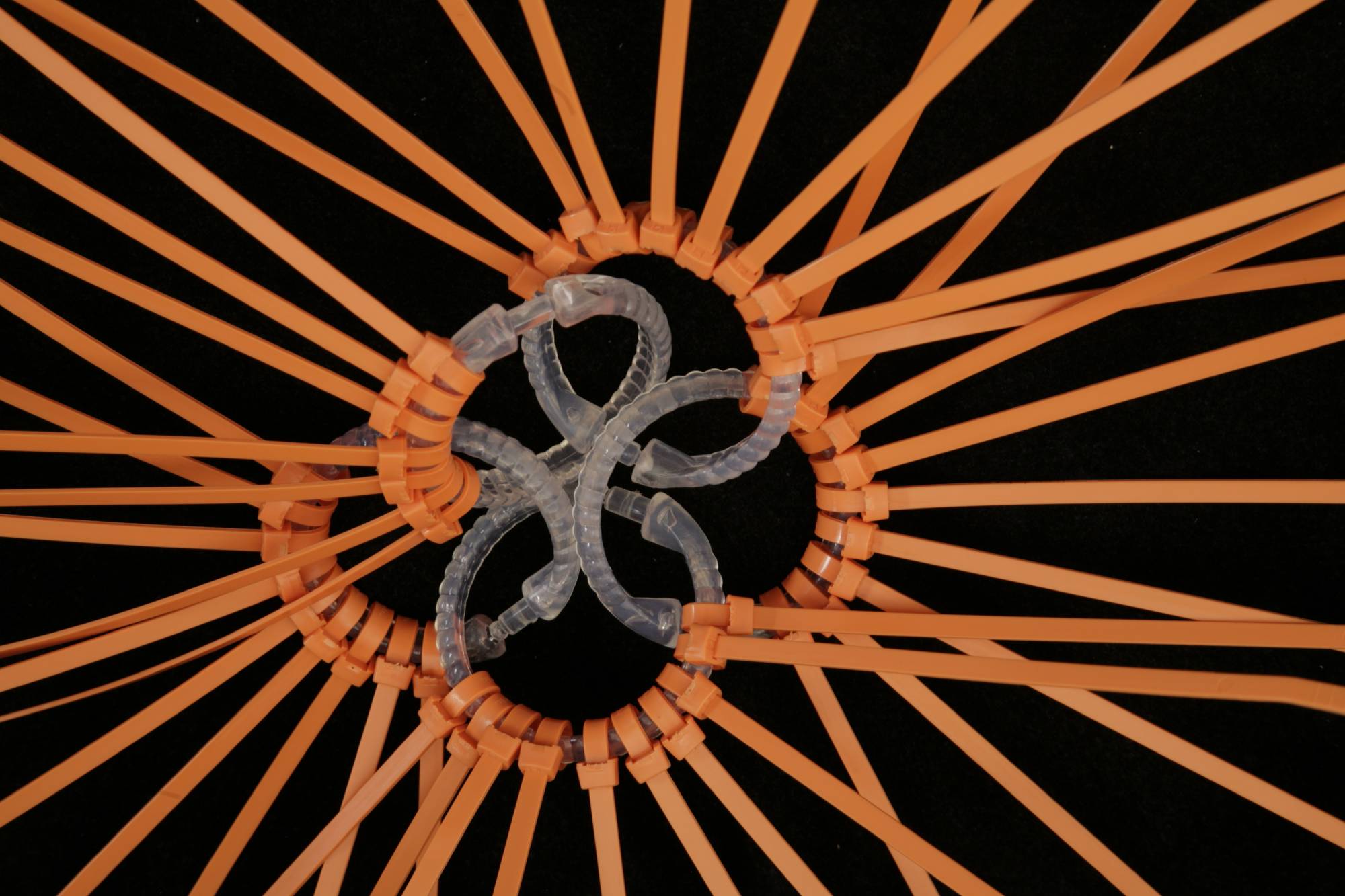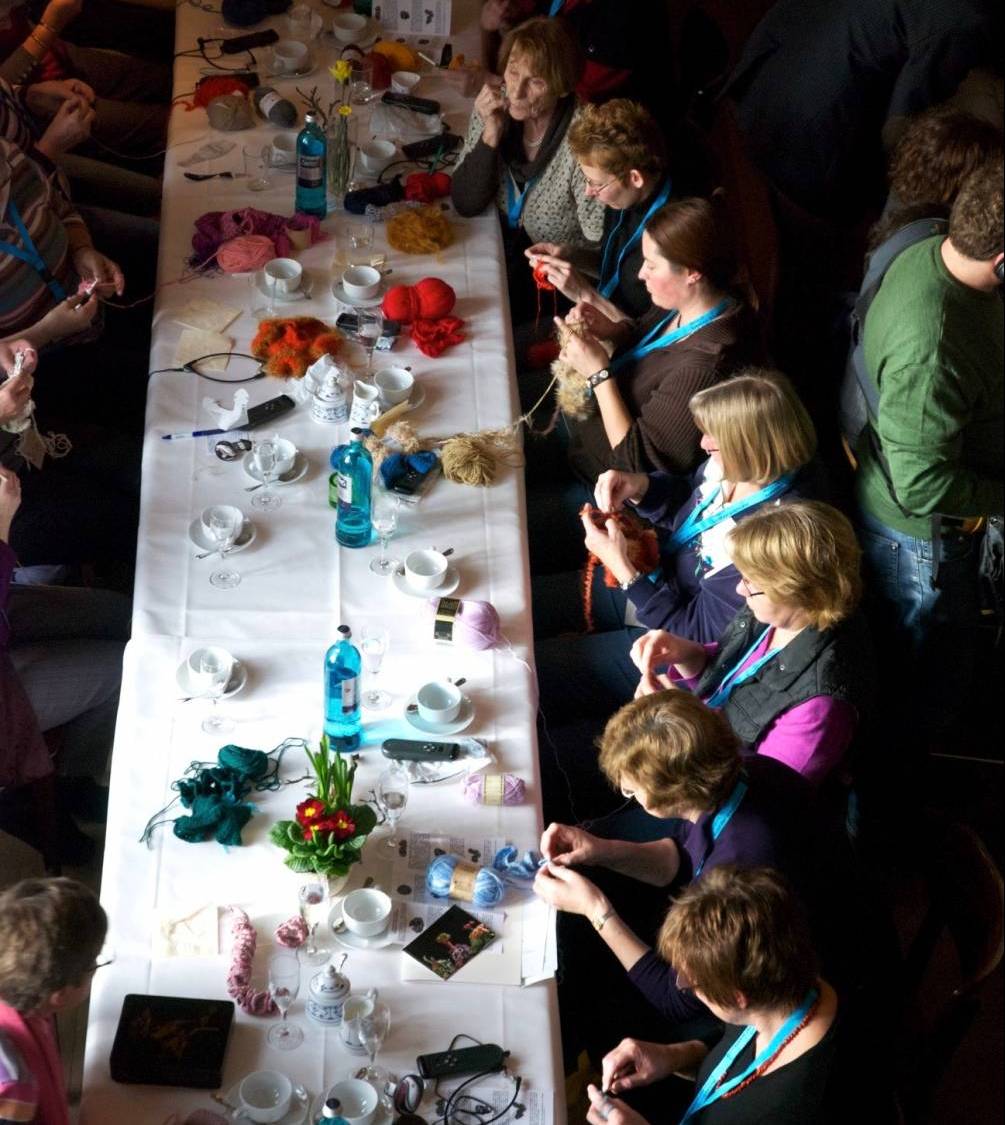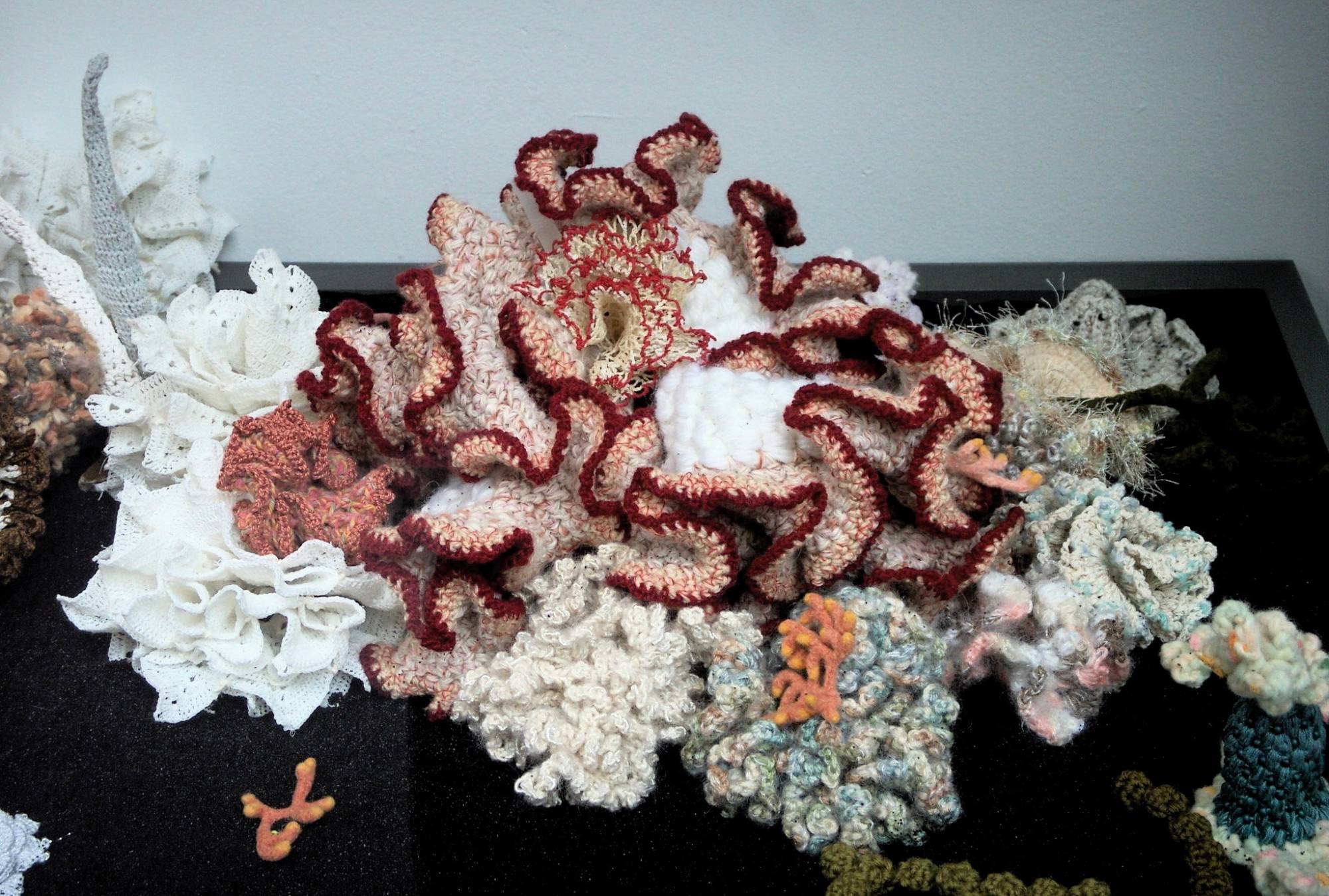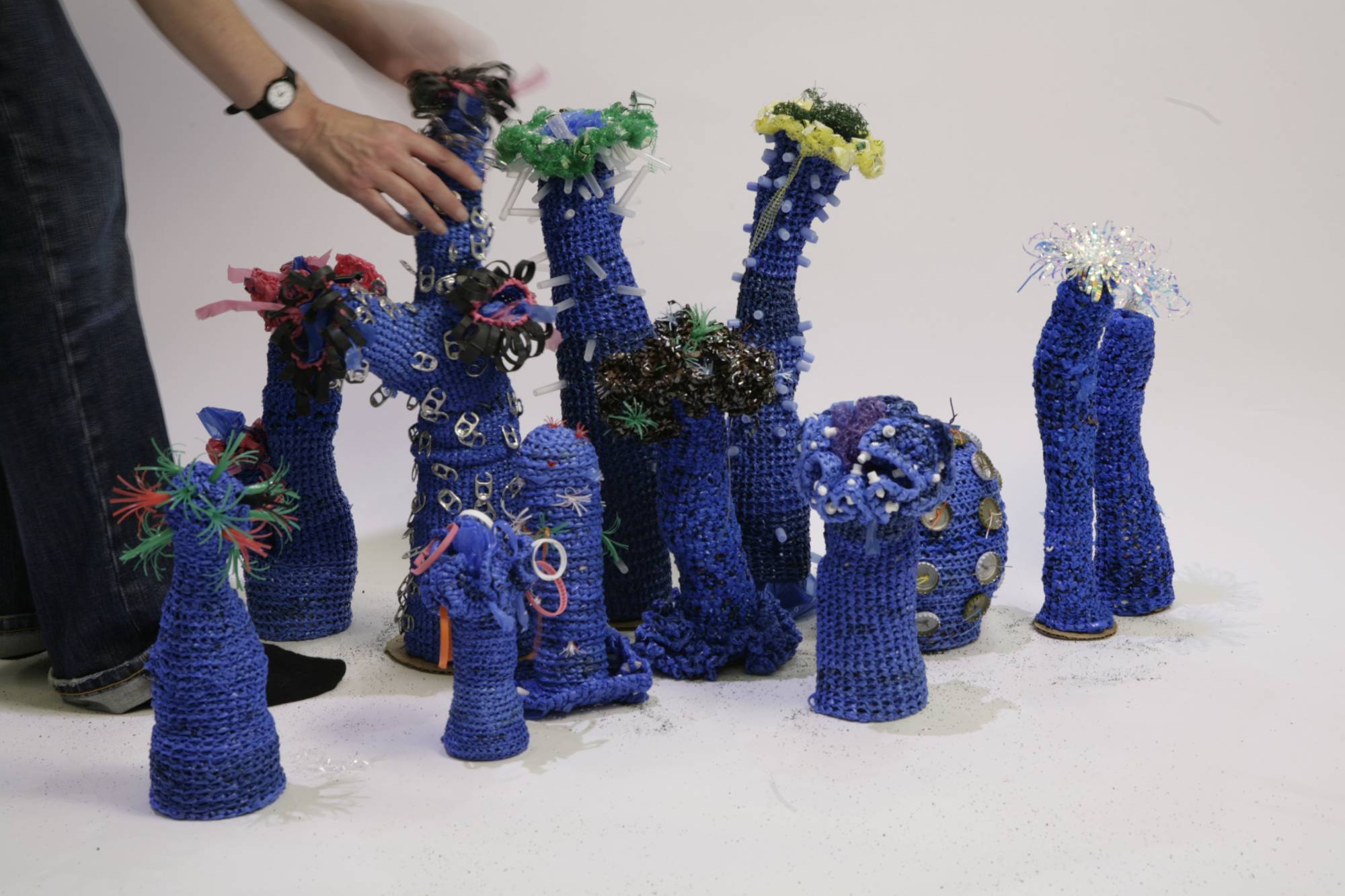Collaborative Creation
Coral reefs are colonial organisms. Each coral head is made by thousands of tiny coral polyps, and every reef is a collection of many coral heads, making living reefs a paradigm of multi-authored complexity. In the spirit of these organic artworks, Christine and Margaret Wertheim invited others to contribute to the evolving collection of crochet reefs that are exhibited worldwide. This Core Collection includes pieces by a curated selection of highly skilled and innovative crafters. Some had never crocheted before coming to the project; others were already established masters. Each of these Core Reef Contributors have left their mark on the Darwinian lineage of the project by inventing new “species” in the crochet reef’s taxonomy – not only individual models for display, but sometimes new genetic patterns in the Reef’s DNA.
Coming from many different walks of life, these Core Reef Contributors include professional crafters, computer programmers, a theater costume designer, a nurse, a librarian, museum administrators, artists, scientists, and home-makers. Works produced by these crafters, much admired in every show, bring us into consciousness that all people have a capacity to make art if given an opportunity. Perhaps the project’s most subversive element is insinuating “housewives” into temples of art – the Hayward Gallery and Venice Biennale among them – thereby challenging ingrained conceptions about “art” being a domain of singular special “genius.”
Core Reef Contributors
Among the Reef’s most admired contributors are Evelyn Hardin, a Dallas homemaker, who introduced medusas into the project, crafting delicate cotton confections inspired by the nineteenth century marine biologist and illustrator Ernst Haeckel. Hardin was also the first to incorporate cable-ties into her forms.
Rebecca Peapples and Sue Von Ohlsen translated the crochet hyperbolic algorithms into beading, making jeweled models that marry the sinuous curves of coral with the enchantments of a Faberge egg.
UK-based, Croatian-born, costume designer Ildiko Szabo put spirals and twists into a garden of fluorescent and pastel-colored anemones and kelps, with a sixties Mary Quant flair; while LA school librarian Claire O’Brien constructed a grove of plastic anemones crocheted from the iconic blue wrappers of the New York Times. Software programmer and artist Anita Bruce knitted sea creatures from the wire used to connect circuit boards to external hardware.
Sarah Simons, one of the project’s earliest and most dynamic contributors, crocheted corals from popcorn stitch and pioneered novel mixes of yarn and plastic refuse.
San Francisco media artist Eleanor Kent introduced us to military-grade electroluminescent wire, a high-tech plastic-coated wire designed for lighting the insides of tanks and laying out airfields in remote desert locations. Kent calls her practice “granny-tech,” and the glowing, bio-luminescent forms she made for the Reef are its only electrically powered pieces.
In Japan, Mieko Fukuhara replicated staghorn corals in fine mercerized thread, the fiber used for traditional crocheted doilies, and from New York, Nadia Severns, a gifted professional crafter, created an exquisite series of miniature coral fantasies using beaded crochet techniques.
One contributor deserving attention is Margaret and Christine’s mother Barbara Wertheim, a pioneering Australian 70’s feminist who helped open the first women’s shelters in their home country. Barbara taught the twins to sew and knit and make their own clothes while they were still in school, and her own crafting skill instilled in them an early love of making that is the seed of the Crochet Reef. For the project, Barbara created a small coral garden in fluffy purples and greens, whose individual elements have ultimately been dispersed into the Coral Forest works.
Satellite Reefs
Living reefs send out spawn that launch into ocean currents and settle down elsewhere to begin making new reefs. So too the Crochet Coral Reef sends out spawn. In addition to the Core Collection, the Wertheim’s work with communities across the globe so local citizens can create their own Satellite Reefs. These community engagements may involve nearly a thousand crocheters, as was the case in the reef made at the Smithsonian’s National Museum of Natural History. On the island of Föhr, off the coast of Germany, over 700 people across Germany and Denmark, and as far away as Austria, crafted a vast coraline landscape more than ten feet high. Gargantuan isn’t necessarily the goal.
Some Satellite Reefs are small and intimate, such as the lovely reef made in Asheville, North Carolina, and the whimsical reef constructed by the citizens of Eindhoven in the Netherlands. As of late 2019, almost 10,000 people have actively participated in more than 40 Satellite Reefs.
Participants have come from vastly diverse professions, fields, and socio-economic circumstances: among them are teachers, students, academics, mathematicians, artists, committed crafters, home-makers, women from shelters and prisoners. In Houston, the project was done in a juvenile prison with a group of teenage girls incarcerated for gang crimes. 99% of participants are women, thus making the collective archipelago of crocheted Satellite Reefs one of the world’s largest female “outsider art” projects.
